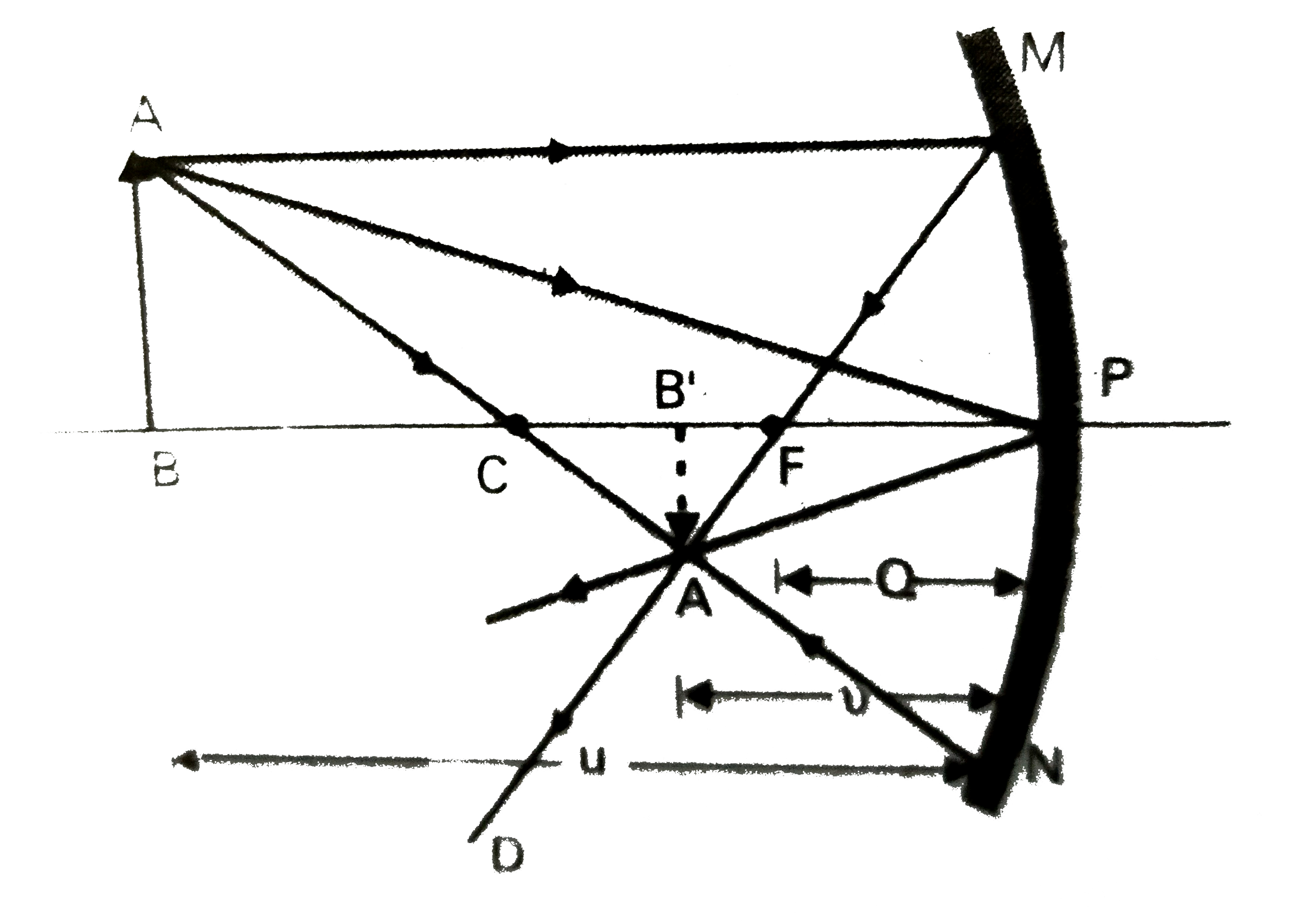Two point surces S1andS2 are 24 cm apart. Where should a convex lens of focal length 9 cm be placed them , so that the images of both sources are formed at the same place ? Solution in Telugu
Distance between two point sources of light = 24 cm
Focal length (f) = 9 cm
Radius of curvature (R) = 2f
R=2×9=18cm
∴ Converging lens is placed at 18 cm (or) Second position of converging lens =24−18=6cm.
∴ position of converging lens = 18 cm (or) 6 cm.
Topper's Solved these Questions
- BOOK - VIKRAM PUBLICATION ( ANDHRA PUBLICATION)CHAPTER - RAY OPTICAL AND INSTRUMENTSEXERCISE - TEXTUAL EXAMPLES18videos
RAY OPTICAL AND INSTRUMENTS
- BOOK - VIKRAM PUBLICATION ( ANDHRA PUBLICATION)CHAPTER - RAY OPTICAL AND INSTRUMENTSEXERCISE - VERY SHORT ANSWER QUESTIONS12videos
RAY OPTICAL AND INSTRUMENTS
- BOOK - VIKRAM PUBLICATION ( ANDHRA PUBLICATION)CHAPTER - NUCLEIEXERCISE - DAM SURE (VSAQ)1videos
NUCLEI
- BOOK - VIKRAM PUBLICATION ( ANDHRA PUBLICATION)CHAPTER - SEMICONDUCTOR ELECTRONICS : MATERIALS , DEVICES , AND SIMPLE CIRCUITS EXERCISE - ADDITIONAL EXERCISES8videos
SEMICONDUCTOR ELECTRONICS : MATERIALS , DEVICES , AND SIMPLE CIRCUITS
Similar Questions
Suppose that the lower half of the concave mirror's reflecting surface in figure is covered with an opaque (non-reflective) material. What effect will this have on the image of an object placed in front of the mirror ?
 02:22View Solution
02:22View SolutionDefine focal length and radius of curvature of a concave lens.
02:36View SolutionThe half life of .58Co is 72 days. Calculate its average life.
05:08View SolutionThe Number of silicon atoms per m3 is 5×1028 . This is doped simultaneously with 5×1022 atoms per m3 of Arsenic and 5×1020 per m^(3) atoms of Indium. Calculate the number of electron and holes. Given that ni=1.5×1016m−3. Is the material n-type or p-type ?
04:06View SolutionWhere should a convex lens of focal lensth 9cm be placed (in cm) between two point sources S_(1) and S_(2) where are 24 cm apart, so that images of both the sources are formed at the same place. You have to find distance of lens from S_(1) or S_(2) whichever is lesser.
06:44View SolutionTwo point sources P and Q are 24cm apart. Where should a convex lens of focal length 9cm be placed in between them so that the images of both sources are formed at the same place?
04:00View SolutionTwo point light sources are 24 cm apart. Where should a convex lens of focal length 9 cm be put in between them from one source so that the images of both the sources are formed at the same place
10:07View SolutionTwo point sources S1 and S2 are 24 cm apart. What should a convex lens of focal length 9 cm be placed between them so that the images of both sources formed at the same place ?
View Solutionदो बिंदु प्रकाश स्रोतों की दुरी 24 सेमी है! 9 सेमी फोकस दुरी के रक उत्तल लेंस (अभिसारी लेंस) को इन दोनों के बिच में कहा रख दे की दोनों स्रोतों के प्रतिबिम्ब एक की जगह पर बने?
05:43View Solutionदो बिंदु प्रकाश-स्रोतों की दूरी 24 सेमी है | 9 सेमी फोकस-दूरी के एक उत्तल लेन्स को उन दोनों के बीच में कहाँ रख दे कि स्रोतों के प्रतिबिम्ब एक ही जगह पर बने ?
View Solutionदो बिन्दु प्रकाश-स्त्रोतों के बीच की दूरी 24 सेमी है। 9 सेमी फ़ोकस दूरी के एक उत्तल लेन्स को उन दोनों के बीच कहाँ रखा दे कि स्त्रोतों के प्रतिबिम्ब एक ही बिन्दु पर बने।
View SolutionTwo point sources S1andS2 are 24cm apart. Where should a convex lens of focal length 9cm be placed in between them so that the image of both sources are formed at the same place?
View SolutionTwo point surces S1andS2 are 24 cm apart. Where should a convex lens of focal length 9 cm be placed them , so that the images of both sources are formed at the same place ?
05:43View SolutionThe distance between two point sources of light is 24 cm. Where should a convergent lens of focal length 9 cm be placed between them to obtain images of both sources at the same point ?
View SolutionWhere should a convex lens of focal length 9 cm be placed (in cm) between two point sources S_(1) and S_(2) which are 24 cm apart, so that images of both the sources are formed at the same place. You have to find distance of lens from S_(1) or S_(2) which ever is lesser.
01:57View Solution

